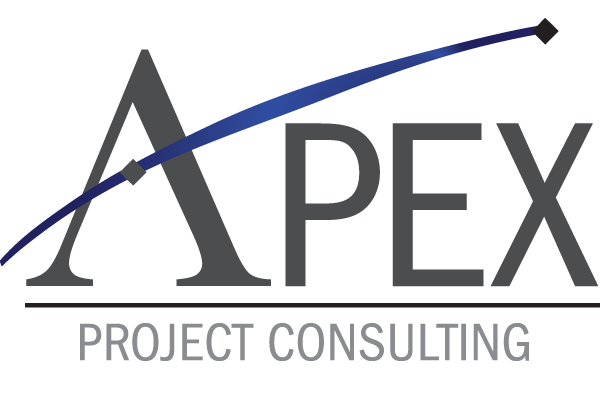Who Eats the Costs/Consequences of Design Mistakes?
Many property owners or tenants voluntarily sign-up to pay for the additional costs of design mistakes without even being aware of it at the time. Of course, no owner or user of real property wants change orders or unexpected additional costs. The cost of design errors can easily (and quickly) top a million dollars.
So I pose the question: If the architect makes mistakes, who should pay for it?
a) Owner?
b) Architect and Engineering (A&E) Team?
c) General Contractor (GC)?
Here is a real world (and real-time) hypothetical about “ownership” of the cost of mistakes. Note: For purposes of this hypothetical, when I mention mistakes I mean “unforced errors”–those mistakes or omissions that are transparently attributable to the Architectural/Engineering team. In other words, these are the GC’s change orders resulting from incomplete or poorly prepared drawings.
Background:
The client (user, tenant or owner of real property) selected an A&E team. The architect is a well known, well respected firm selected in a “no-bid” arrangement. The A&E team is also the one that built the original building from the ground-up. So there’s no issue of hidden conditions or as-built drawings.
The client used a similar no-bid basis for selecting the GC. Like all users, the client has insisted on a “no-change-order” outcome. Now the question becomes: How to make it happen? Can it be done?
Let’s consider a few quasi-rhetorical questions to get things rolling. If the A&E team doesn’t own or absorb the cost of their own mistakes who should? We must assume that budget is not a factor. In this instance the client has accepted as market-rate the A&E team’s proposed fee.
Option One: The Client Pays
But why should the client pay for mistakes? Why would this be fair? Forget fair, would it even be reasonable? Practical?
The client’s focus is their core business. They are not sophisticated, experienced consumers of A&E services. They are not bargaining to accept the risk of additional costs. Just the opposite. They simply want to write checks. If the A&E team holds themselves out as “world class,” shouldn’t that include responsibility for mistakes?
Option Two: The General Contractor Pays
The client or project leader could choose to implement a guaranteed-maximum-price construction contract with the general contractor, then generously pad the “contractor’s construction contingency” line item. This would certainly blunt the additional cost issue. But is it that fair? Is it tailored to efficiently (at market rate) fix the issue? Or does that just obfuscate the problem?
While the contractor will get some relief through the contingency, they are still rolling the dice. If the errors are substantial enough, the contractor is at risk.
Option 2A: Contingency
Another alternative would be for the contractor to inflate the contingency to contemplate any and all potential scenarios. Maybe this is the solution? After all, whatever is left of the construction contingency would have to be returned to the client. But isn’t this just an end-around? Isn’t it a less conspicuous way of passing on to the client the cost of the mistakes of others?
Option 3 : The A&E Team Pays
Is perfection the right standard? The architect maintains that “100% perfection” is not attainable — the “nobody is perfect” argument. If you buy a new car or a new home, no reasonable person would expect that it’s 100% perfect. But they would expect to be protected from the costs of mistakes. If the car or house had a defect, the manufacturer would be expected to make it right. So why not with an A&E team? This opens the door to a related question. If not perfection, then what is a reasonable standard?
In other words, if one were to accept that 100% correct is unreasonable, then where would one draw the line? 95% accurate? 50% accurate? The fact of the matter is once you agree that the “generator” of the mistake is not responsible for the consequences, then you’ve also accepted that mistakes are essentially unbounded.
All A&E and GCs are essentially monopolists once they’re on-board and the work has begun. It is for all purposes too expensive and disruptive to change vendors. Then why would a rational consumer of A&E services accept a position (pre-contract signing) that allocated or exposed the owner to any risk at all? More importantly, do clients have any choice?
So What Is the Right Answer?
Reasonable people can and will disagree on which option should apply, but we can all agree on one thing: The method (process), timing and choice of (and content of) contracts with expert professionals are all critically important to the success of a major improvement. In particular, the focus must be on the timing. Said another way, if the client blows the opportunity to get it right at the front-end of the project, there are few, if any, cost effective or painless remedies.
The almost universally accepted and perpetually repeated notion that, when it comes to A&E work nothing can be 100% perfect is diversionary. Nothing ever is. And that’s where we have both the appeal of this argument and the mistake.
The critical point is primarily about cost-ownership and less about achieving perfection. It’s all about allocating costs and risks to those best able to prevent them and who are appropriately responsible for the consequences.
There is no one in the property improvement supply chain better positioned and empowered to prevent A&E mistakes than the A&E team. Thus they should at least have some skin in the game with respect to the cost of errors. While readers may disagree about the conclusions, maybe we can rally around a few fundamental principles.
• It’s not fair to burden those not responsible for mistakes with the cost. Similarly, it’s not right to completely give a pass to the originator of the problem.
• This issue of cost and risk allocation cannot be effectively or appropriately handled post-contract execution.
• A proactive, proven, battled-tested process to ensure that consumers of A&E services are insulated from unbounded costs must be implemented.
• This process isn’t for the faint of heart. It is 21st century project leadership. Without a proven process to guarantee results – at the precise time – the game is lost before it started.
• This situation demands a complex and unique mix of design and construction subject matter expertise, design and construction contract drafting skills and professional project management credentials.
So regardless of where you come down on this issue of “who should pay?”, the window of time to expertly address it and resolve it is narrow. It’s a brief, but critical moment in time at the very beginning of the real property improvement life cycle. Miss it, and it’s all over but the shouting. Don’t let it pass you by.











